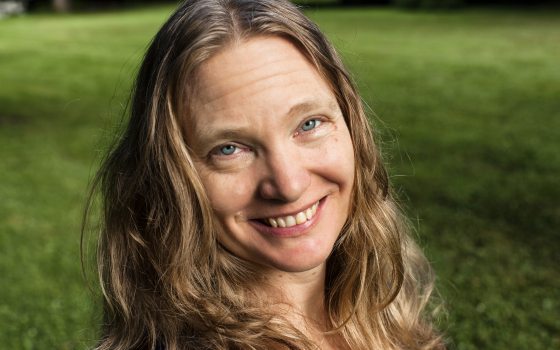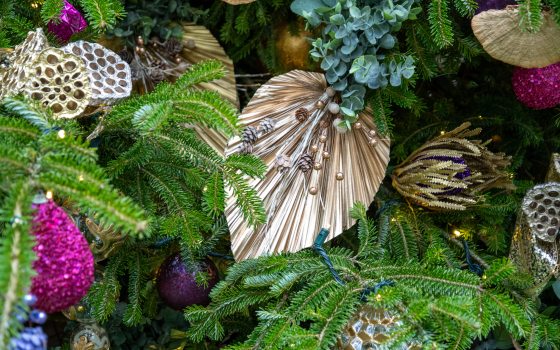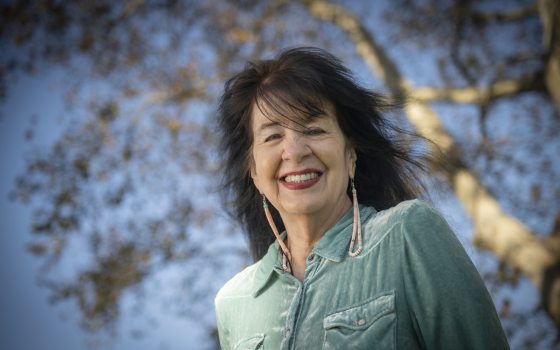Editor's Note: Please join us on May 4, 2021 at 6:30 pm for a free virtual discussion of Birds and Birding with Mya Thompson, J. Drew Lanham (author of our adult Community Read title The Home Place: Memoirs of a Colored Man’s Love Affair with Nature), and Wingyi Kung of The John Heinz National Wildlife Refuge. Registration is required.
Along with our community partners, we are thrilled to offer the eighth year of our Community Read, in which we ask readers to discover how one finds a passion for nature and explore what can become of that spark. For our youngest readers, this year we have selected Ruby’s Birds, written by Mya Thompson and illustrated by Claudia Dávila … a delightful story about a little girl discovering her spark—birds—in her own city neighborhood. Published by The Cornell Lab of Ornithology, Ruby’s Birds received a 2020 Northern Lights Book Award in the Nature category. We had the pleasure of recently speaking with Co-Director for Engagement in Science and Nature at The Cornell Lab and author of Ruby’s Birds Mya Thompson about her work, her inspiration, and her recommendations for how families can get involved in birding and nature appreciation.
Ruby's Birds is about a little girl's spark for a love of birds. What was your spark for your love of birds?
I love the concept of spark and I love asking that question of other people—and I love when people ask me. I did have a spark when I was quite young. I was walking in the forest by myself, so I was probably 10 or 11. A great horned owl was at my eye level through the trees, through the underbrush, and I remember just locking eyes with it. Then I started walking and it flew sort of next to me for a little while. That was a spark moment where I could understand that even though we weren't really communicating, I just felt like I really experienced that owl, and I locked eyes and we had a moment! I think that immediate face-to-face contact with a bird like that was just very powerful for me.
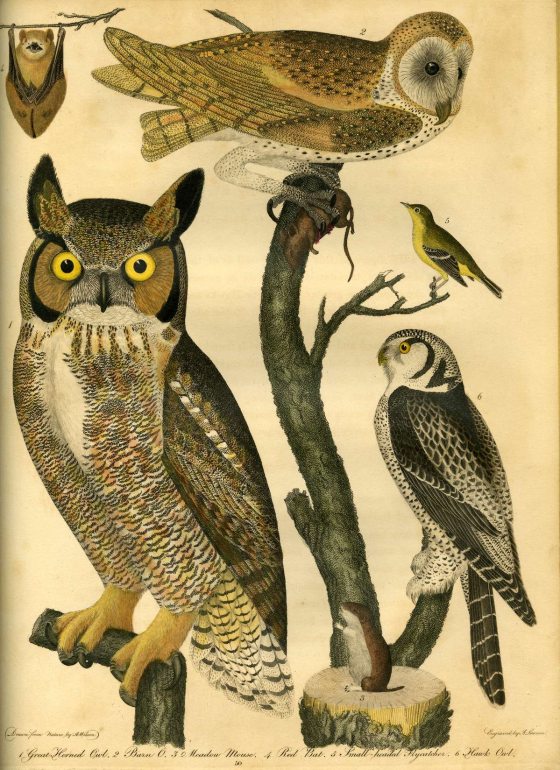
How did you become involved in The Cornell Lab? Could you tell us about the work that you do there?
As a high school student I became fascinated by the sounds that animals make. Also, I was really into music—I was in a band, I was studying piano, and this concept that animals could make sound and maybe even music was fascinating to me. I became involved in The Bioacoustics Research Program at The Cornell Lab with Katy Payne who studies elephants, and we studied the infrasonic sounds that elephants make. Those are sounds below the level that we can hear without speeding up the recording.
I went off to college and was living in the Bay Area doing environmental education work, mostly around gardening and organic food, and I came back to Cornell because Katy Payne called me and said “We've got funding. Would you like to go to Africa with us to study elephants?” I did that for about 10 years, then got my Ph.D. related to elephant communication. During that time I had a fellowship to work with school teachers to help students do authentic investigations in science. That, in addition to doing a lot of environmental education all the way throughout, solidified for me how much I wanted to work in education. Specifically, I loved informal nature education and formal science education. When there was an opportunity to come back and work at The Lab in the education program, I was thrilled and have been working here ever since. We have so many exciting education and citizen science projects going on [through the] Engagement in Science and Nature Center.
How did you get the idea to write a children's book? Had you ever written before?
No, this is my first children's book, but I am a huge fan of picture books. Always have been. Even before I had children I had picture books in my house, and then we read picture books to our kids every night for 10 years of each of their lives. So, my love for children's books is very deep, and what sparked it for me was a really amazing documentary that I watched at The Lab at a lunchtime presentation. It's called The Central Park Effect and it's about birders in Central Park. I think the kids were probably seven and four at the time when I saw that movie, so I was probably deep in reading children's books every night. What sparked me there was an early teenager in that movie named Anya, who talked about having a dream that all of the birds, all of these spring migrants, were coming to one tree. She was looking at this one tree with all of these birds on it and how amazing it was. Immediately I said, oh that's so beautiful, that somehow has to be a book. That concept of bird abundance and biodiversity right in Central Park is the core of Ruby’s Birds.
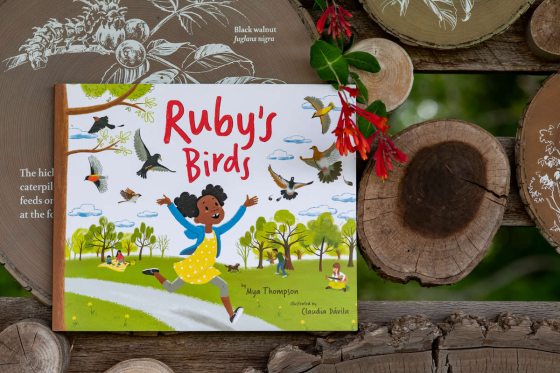
Do you plan to write any more books?
Yes, we've been working on a graphic novel about the natural superpowers of birds called Winged Heroes. It’s for a little bit older age group—fourth, fifth, sixth grade. It is also set in New York City, and the main character is a pigeon named Emilio who is at the bottom of the pecking order and is always getting bullied. He looks up to this fictional Peregrine Falcon, a “Winged Hero” named Fantastic Felipe, and it's basically about his journey to discover his inner superpower—which is of course navigation.
There are ties in Ruby's Birds to The Cornell Lab’s Celebrate Urban Birds project. Could you describe that project and The Cornell Lab’s goals for it?
Celebrate Urban Birds has been going strong for more than a decade. Their mission is to make sure that we are incorporating the arts and culture and festivals into our appreciation of birds, and also that we have an easy to participate in citizen science project that that can be done in an area the size of a basketball court, and with a restricted number of species so that it isn't so overwhelming. You just have 12 to 15 species, and you have 10 minutes. It's a super vibrant project that has been evolving over the years, and what's so exciting about it right now is that out of the collaborative work of that project, there's a nationwide collaboration of community-based organizations partnering with The Lab to understand equity, diversity, and inclusion in the sciences. It's gone beyond a citizen science project to become a project that's really uncovering the barriers to participation, and the various kinds of cultural and racist factors that play into all of this.
Does The Cornell Lab have other resources that can help families who might want to look for birds and explore nature?
One of the most exciting things that I can recommend is a free app called Merlin. Merlin will step you through three easy questions while you're out in the woods, out in the park, or out on your street if you see a bird. Merlin will guide you, based on what we know about what birds are in that area, and what time of year it is, and where you saw that bird. Whether it was on a tree, on a fence, in the water, it's going to suggest to you, it could be this, this, or this. It's an amazing tool to help you learn what birds are around you.
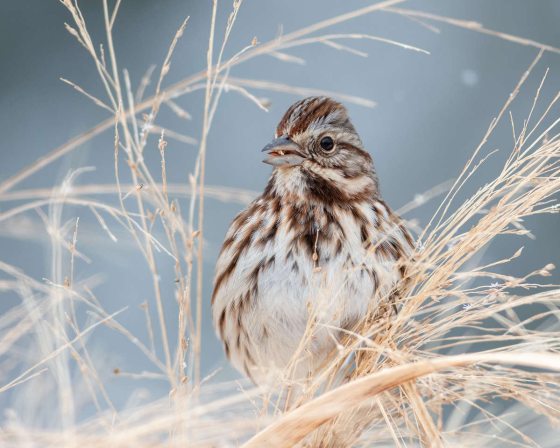
We also have a set of free resources called Science & Nature Activities for Cooped Up Kids. It’s for any age group from kindergarten all the way to sixth and seventh grade. It's a really fun set of activities, and some of them are called family quests that will help you connect with birds on any of the topics that you might be excited about, whether it's about how birds behave, birdsong … there's lots to choose from.
We hope you will join us in reading Ruby’s Birds, which is available for borrowing at most public libraries in New Castle County (DE), Cecil County (MD), Berks County (PA), Chester County (PA), Cumberland County (PA), Delaware County (PA), Lancaster County (PA), and Montgomery County (PA).
Check out our Community Read calendar of events for creative and fun programs presented by our terrific Community Read partners. You are sure to find a program that will spark your own journey!
